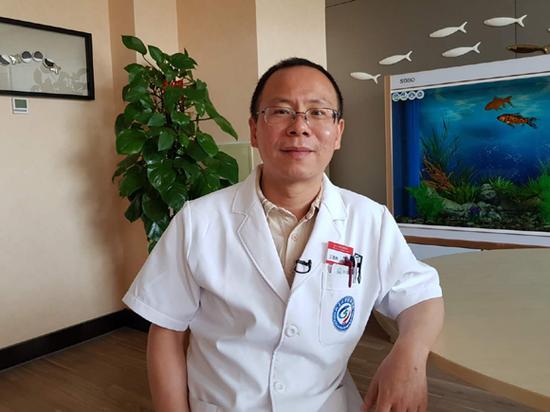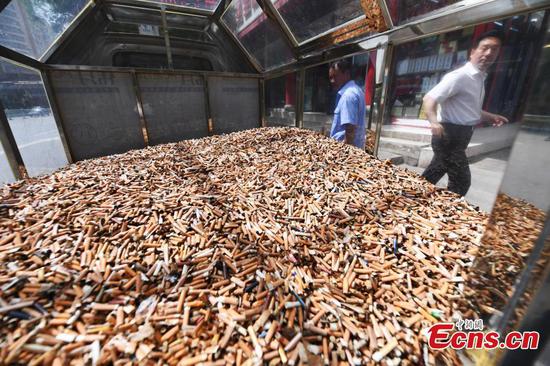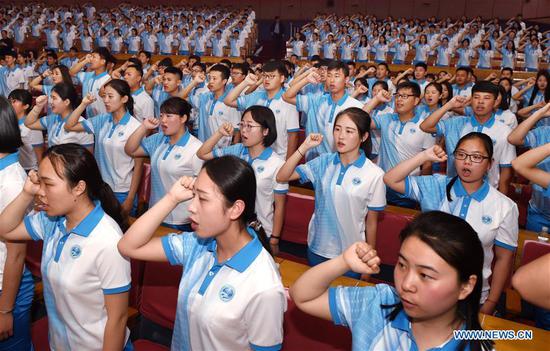
Dr Wang Delin, chief physician of the Oncology Department at Peking University Shougang Hospital. (CGTN Photo)
Patients have welcomed the ease on their finances that has resulted from the implementation on May 1 of China's zero-tariff policy on all cancer drugs.
Eighty-five-year-old Ms Wang is one such patient. She said she was happy to hear that the drug she is taking was also included in her medical insurance coverage last September.
"My sickness had yet to relapse at that point [in September], but I managed to catch it this time around with the zero tariff,” Wang said. “The reduction of tariffs has benefited us ordinary people."
Dr Wang Delin, chief physician in the Oncology Department at Peking University Shougang Hospital, said that generally, patients costs have come down by an average of 10 to 30 percent, partly due to the reduction in tariffs.
“It’s a good starting point,” Dr Wang said, responding to the question that tariffs only account for three to six percent of a drug’s cost.
“For a policy to see immediate changes – we still need a lot of supporting policies beyond tariffs, such as pricing of goods, medical insurance, patients’ and doctors’ notions," he said. "It’s a transformation process and we have to keep up with changes of times.”
The value-added tax on cancer drugs was also reduced from 17 percent to three percent from the beginning of the month.
Dr Wang commended the zero-tariff policy, but he also brought to light the country’s medical insurance policy which has been relaxed to include imported drugs. “Imported drugs used to be expensive but now patients have a little more choice in picking drugs,” he said.
For example, the physician said the drug that M. Wang takes – Rituximab Mabthera – has seen its price gradually fall from a high of over 20,000 yuan to more than 3,000 yuan (per serving) due to the reduction in price and tariff, and having been included in medical insurance.
That said, while the variety of drugs increases as China continues to open up, Dr Wang is urging local pharmaceutical companies to continue upping research and development efforts to develop new drugs.
“We have a huge population and correspondingly, a higher number of patients. To rely on imports for new drugs will burden the country’s medical insurance and fiscal position,” he said.
“We can [also] seek to negotiate with others to shorten the protection time of patents, or to buy over the protection rights to reduce the time spent on basic research, to allow more drugs to enter clinical use as soon as possible.”
Ultimately, Wang said it’s the direction forward that counts for China to independently develop its own brand of new drugs and provide citizens with more choices.
China was the world’s second largest pharmaceutical market, worth 122.6 billion US dollars in 2017.
But its healthcare expenditure as a share of GDP – at 5.5 percent in 2016 – stood well below the Organization for Economic Co-operation and Development’s (OECD) average of nine percent among its 35 member countries.
This, according to analysts, suggests that China’s pharmaceutical market still has great potential to grow further.


















































